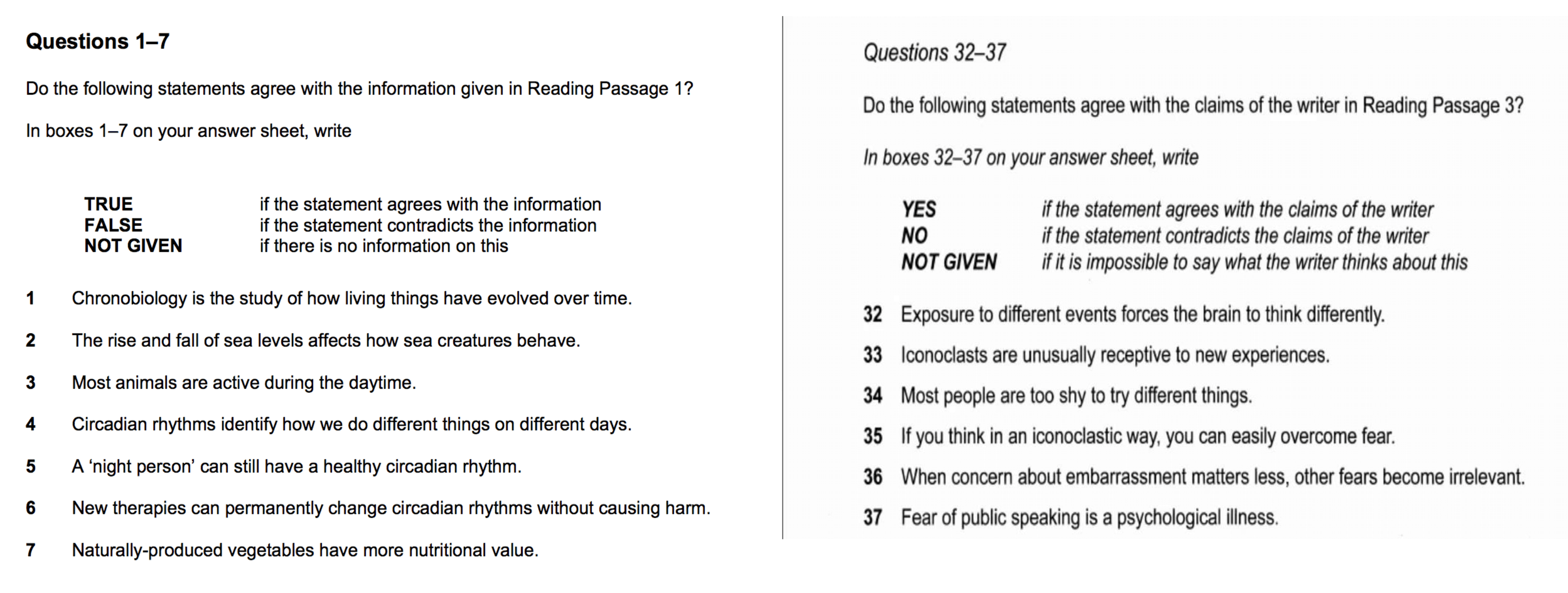Examples

Strategies & Tips
- Read the instructions carefully (‘TRUE’, ‘FALSE’, or ‘YES’, ‘NO.’)
- Underline key words in each statement & scan for their synonyms/ paraphrases in the passage
- Once you spot the information, read around the key words/ synonyms/ paraphrases (preceding & following sentences that contain key words)
- The statements follow the order of the information in the passage.
- Pay extra attention to extreme words
- quantifiers (ONLY, ALL, FEW, SOME)
- frequency adverbs (RARELY, SELDOM, ALWAYS, SOMETIMES)
- negative (NOT, NEITHER)
- comparison words (MORE, LESS, FEWER)
- TRUE statements must match 100% with the information in the passage (i.e., share exactly the same meaning).
- If the statement is partially incorrect or have opposite meanings, it’s FALSE.
- If some piece of information in the statement is NOT MENTIONED or NOT EVIDENTLY PROVED from the passage, or if you find the right part of the text but you can’t find the answer, it’s NOT GIVEN.
- Find the answer by reading the text. Don’t use your own knowledge.
- There is always at least 1 True, 1 False, 1 Not Given or 1 Yes, 1 No, 1 Not Given answer.
Remember
- Remember to read the instructions carefully, carefully! You won’t get any marks if the questions are about TRUE/ FALSE and what you have on your answer sheet is YES/ NO, or vice versa.
- Write your answers in full words, not just in short forms. Specifically, you should write TRUE/ FALSE/ YES/ NO/ NOT GIVEN instead of T/ F/ Y/ N/ NG.




0 Comments